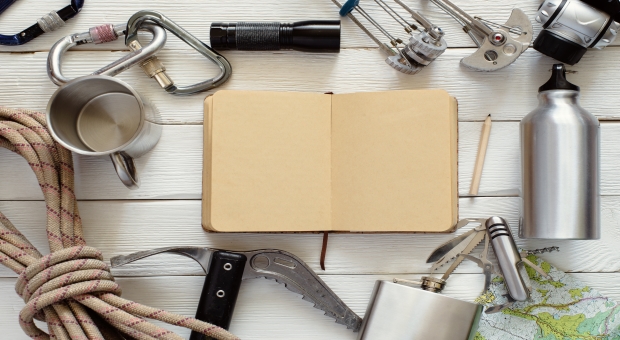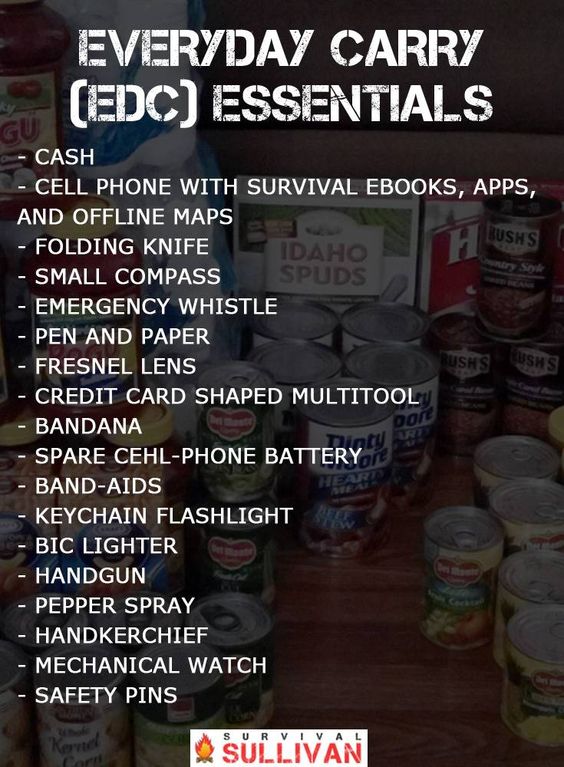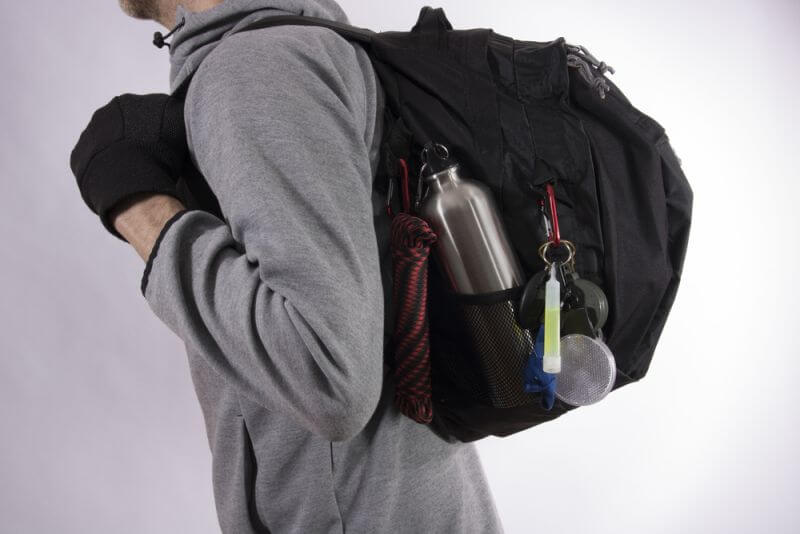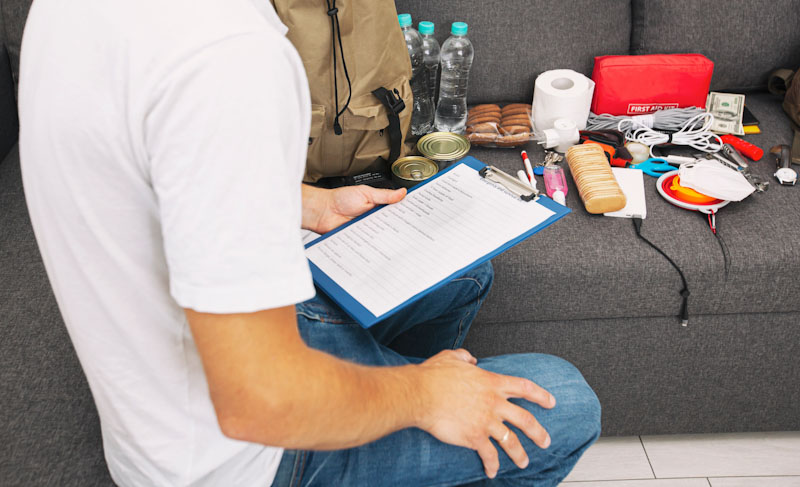Anyone who has been a prepper for a while knows that it can become all-encompassing, taking over your life.
The sheer volume of things that any of us need to do to be prepared can become overwhelming. When it does, we all look to find balance between our preps and the rest of our lives. But even that can be a bit delusional, as it can mean overlooking things we should be doing.
One of the things that becomes easily overlooked is maintaining the preps we already have done. We tend to think that what’s done is done and go on to other things. But the reality is that there is no guarantee that the things which we already have done will stay good. Moth can devour and rust can destroy, not to mention the horrible thing that bacteria can do to our food. Unless we make the time to take care of our preps, we might find that things we thought were in good shape, no longer are.
Inventorying and inspecting everything we’ve done is something that should be done yearly, if not more often. Functional items should actually be used, to ensure that they still work. Overall, everything that we have must be maintained in one way or another, or we may be unpleasantly surprised when we need it.
Let’s Start with Food
Since most preppers start prepping by building a food stockpile, it only seems correct that we start our discussion with food. Food becomes the bulk of our prepping, simply because of the sheer volume of food that we need to stockpile.
As we all know, food can spoil. We try to package it to prevent that; but that doesn’t mean we’ll succeed. At least, we probably won’t succeed perfectly. Chances are that something we have will go bad, even after we’ve done the best we can.
Canned goods are generally understood to last forever in the prepping community. We’ve all read articles about old canned goods which were opened after 50, 60 or even 80 years, only to find that they were perfectly good. That’s encouraging, especially if we have a lot of canned goods in our stockpile.
Even so, canned goods can go bad. I’ve had cans of what looked to be perfectly good food corrode all the way through, allowing the contents to spoil. There haven’t been very many of them; but it has happened. If the coating on the inside of the can becomes damaged (usually during manufacturing or the canning process) acids from the food contained in the can will have the opportunity to attack the metal can, eating through it.
This is more likely to happen with acidic foods, such as tomatoes and pineapple. But it may not stop with just one can. As the spoiled food starts leaking out of the can, it can leak onto other cans, attacking them from the outside. Since the coating used on the inside on the outside, that acid can eat through those cans even easier.
That’s not the only canned food which can become damaged. I’ve had food go bad which was canned in plastic jars, specifically applesauce. Plastic jars don’t offer the same level of protection that glass jars or metal cans do.
We also need to be concerned about our dry food stockpile. Most of this should be in five-gallon food-grade buckets; but I’ve encountered many preppers who had dry foodstuffs stored in containers which did not offer as good a protection as those five-gallon buckets. In most cases, factory packaging, even if it is done with the idea of long-term storage in mind, isn’t as airtight as it should be. I’ve run across many families who stored that food in the containers that it came in, only to have the food ruined.
This has happened with dry milk, more than anything else, although I’ve also seen it happen with coffee and instant mashed potatoes. The food became damaged by moisture, because the “cans” it was packaged in were made of cardboard, not metal. Because of this difference, even minor damage to the container can allow moisture in.
Surprisingly, even five gallon buckets can become damaged and the food inside spoil. I’ve personally had buckets broken into by rats eating through the plastic. I’m still fairly certain that mice can’t do that, but rats, being larger, can. Once that happens, the smaller mice can also get inside and eat the contents.
All of these potential problems can be discovered by visual inspection of your stockpile, on a regular basis. When doing that inspection, be sure to move cans and buckets around, so that you can see everything. If something goes bad, it’s probably not going to be the container that’s easiest to see.
Don’t Forget Your Water
While you’re checking your food stockpile, be sure to check your water as well. While water really doesn’t go bad, the containers can grow algae in them. I’ve had water in gallon jugs, 55 gallon plastic barrels and 200 gallon tanks grow algae in it.
Fortunately, this is an easy problem to solve. All you have to do is to add bleach to the water, at a ratio of eight drops per gallon, just like what you do to purify it. This will kill the algae, as well as anything else that is in the water.
What About Your Survival Gear?
Surprisingly, I’ve run across a lot of preppers who buy survival gear and never take it out of the box. They apparently assume that the products they’ve bought are good, functional and without defect. Personally, I haven’t been that lucky. I’ve had more than one piece of gear that was dead on arrival and quite a few that didn’t end up being quite as advertised.
Survival gear needs to be used, not just inspected, to ensure that it is functional. If you’re concerned about wearing out some piece of gear, by using it, than you obviously didn’t but gear that was of sufficiently good quality. About the only exception to that is gear which has consumable parts, like filter elements in a water purifier.
Using your gear regularly does more than just test it though. It also gives you a chance to become accustomed to working with that piece of gear. I don’t care if it is a generator or a water filter, you’re going to need to know how to use it and do so without really having to think about it.
One good way of doing this, at least with your bug out gear, is using it to go camping from time to time. I schedule at least one good camping trip a year, allowing myself the opportunity to get all my camping gear out and use it. That verifies that it is all still in good condition, as well as keeping me current in how to use it.
Granted, using that gear means that I have to clean and maintain it afterwards; but that’s useful as well. Gear that is just left in storage, without any maintenance, tends to get rusty. Gear that gets used, then cleaned up and oiled, stays in good shape.
This also means that I have to restock some items, because I’ve used them. Some of our gear might be single-use, disposable items, like rescue blankets. In most cases, I keep a stock of those items on hand, so that I always have spares to restock my bug out bag, EDC bag and camping kit.
For larger gear that is part of my bug in plan, like my solar oven and water purification system, I don’t wait for an annual camping trip to use it. Rather, much of that equipment is used in my home, if not on a daily basis, then at least on a monthly basis. For things like the solar oven, periodic use allows me to work on adding new recipes to my collection, so that when I really need to use it, I’m ready.
Don’t Forget Spare Parts
Some survival gear is just fine the way it is and other things need more serious maintenance. The most maintenance that an axe needs is occasional sharpening. But if you’ve got the old-fashioned Coleman lanterns, the kind which will run off of gasoline, then you’ll need the mantles for it and a pump rebuild kit for the little pump that’s used to pressurize the gas tank.
Being able to maintain the equipment we have is an important part of being prepared. Take a machete for instance. Do you know how to sharpen one? If you don’t have one or never use one, then you probably don’t. But if you have one in your survival gear, like I do, then you need to know. Using it periodically will force you to maintain it, which also means having the tools you’ll need to maintain it with.
I’ve had this happen with a number of different pieces of gear, where I bought it without understanding the maintenance it needed. It wasn’t until I started using it, that I discovered what it was going to take, to be able to use that piece of gear in a survival situation. In a couple of cases, that required purchasing tools that I didn’t already have.
Reorganize as Needed
I don’t know about you, but I have so much stuff that I have trouble remembering what I have and where it is. Making a habit of checking my preps from time to time, inspecting things and testing them out, also gives me a chance to reorganize things as needed.
At times, I’ll find that the way I stored things is no longer ideal, because I now have more of some items or have changed the way I do some things. Reorganizing may just be a way of moving things around, in order to make them more usable, when the time comes.
There was a time when I was working to establish remote supply caches for use in a bug out or other emergency which might catch me far from home. That ended up being a major reorganization of my supplies, because they were not well organized to pull the small stockpiles out of, in order to make my caches. In the process, I was able to store the food which I was keeping in my home in a better manner, so that it would be more accessible for use.
Inventory
This is the ideal time to check your inventory of your supplies, especially food and other consumables. Since you will be putting eyes on everything you have, creating a printed inventory of it at the same time really isn’t much harder.
I always make sure that I have a printed inventory of my survival stockpile and not just one on my computer. There are many disaster scenarios which would render a computer useless, especially anything that takes down the electrical grid. So, as with my other survival information, I try to ensure that the inventory of my stockpile is printed and placed in a waterproof container.










-Jed | July 9, 2019
|
As for a written inventory, I have two copies plus. One copy is at my desk and the other copy/copies are with the preps. “One is none.”
Jefferson NWENGLAND | December 12, 2019
|
I think keeping a list of all your supplies “could” be a very bad idea !
If someone steals some of your supplies,
Or you have to give up some because of threat etc, it’s no big deal.
But if they find a list of all your supplies , then you could lose everything !
I’d suggest hiding your desk copy and maybe make a digital encrypted copy on a sim card.
I learned “T-line shorthand because I’m a slow writer but it’s also a fantastic (obscure) form of code .